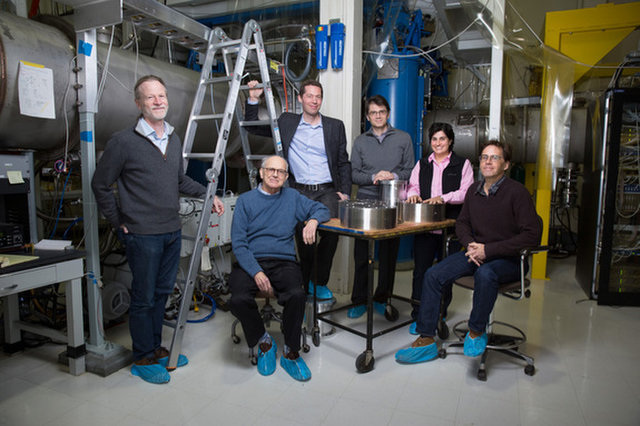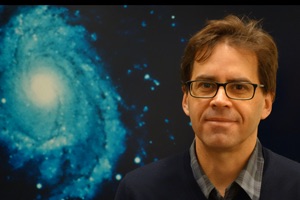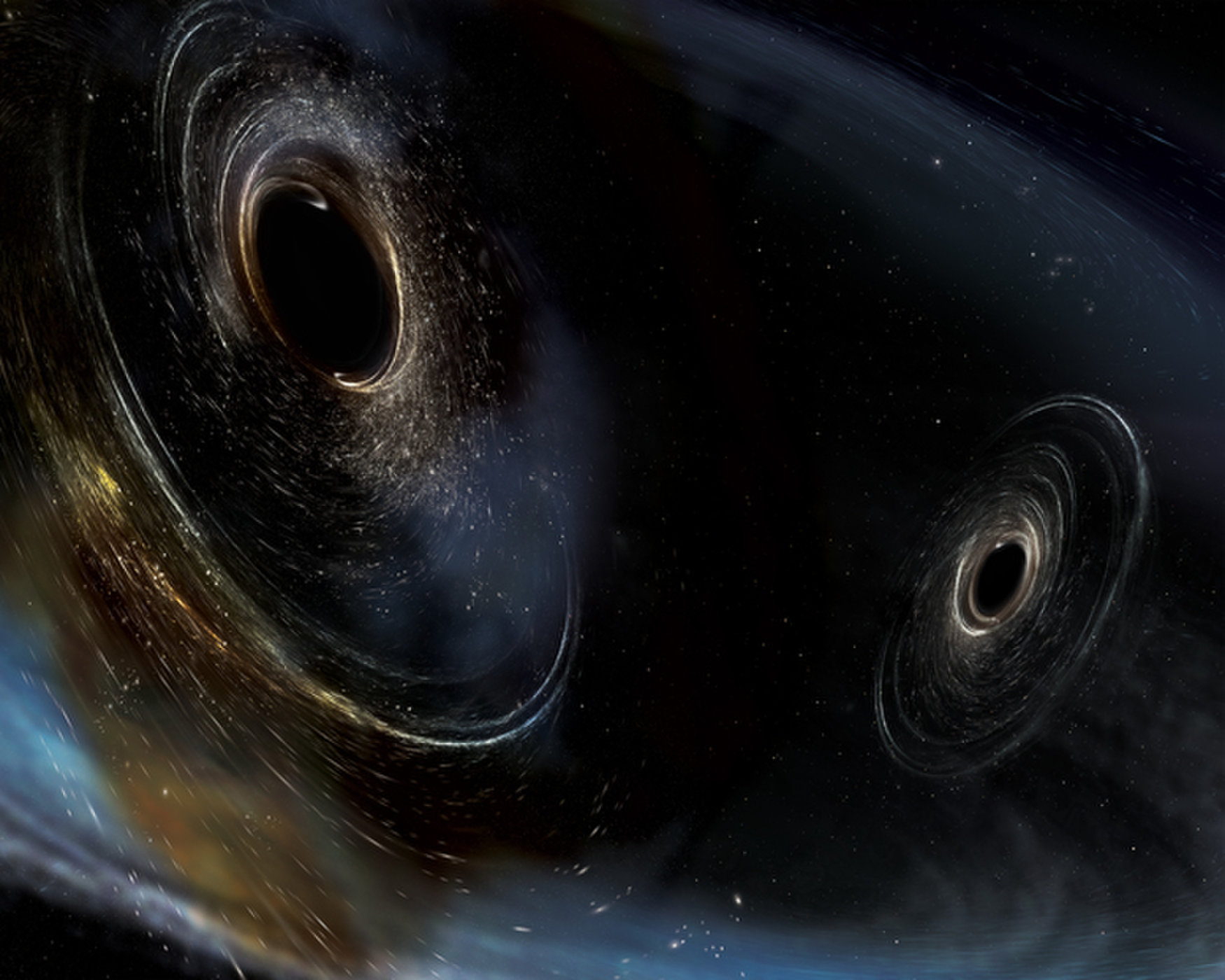'Outshone Everything in the Universe': Scientist Talks Gravitational Waves in NYC

BROOKLYN, N.Y. — A dedicated scientist engaged an audience of college students and local leaders — including the president of New York City's Metropolitan Transportation Authority — on the emerging field of gravitational wave astronomy.
Peter Fritschel, the evening's honored guest, was part of the team at the Laser Interferometer Gravitational-Wave Observatory (LIGO) at the Massachusetts Institute of Technology (MIT) that made the groundbreaking 2015 detection of gravitational wavesfrom a binary black-hole merger.
He was there to discuss the detection of a collision so formidable, "the power that was emitted by the source at the very peak was just enormous, four times 10 to the 49 watts — 49 zeros after," Fritschel said at the lecture Nov. 30. "That peak power [was] more power than all of the visible light in the universe at that time. So, in a very brief instance of time, this source outshone everything else in the universe." [Gravitational Waves: Ripples in Space-Time]

Jeffrey Lynford, namesake of the annual Lynford Lecture Series at the New York University (NYU) Tandon School of Engineering, welcomed Fritschel, who is senior research scientist at the Kavli Institute for Astrophysics and Space Research at MIT, to give this year's talk. A representative of New York state Governor Andrew Cuomo also joined the speakers.
Lynford highlighted Fritschel's 25-year contribution to gravitational-wave detection — Fritschel's dedication to the topic goes back as far as his early career dissertation, entitled, "Techniques for Laser Interferometer Gravitational Wave Detectors," Lynford said.
It was at this moment that Lynford told the college audience that to "get the right mentor" was one of the most important choices a student could make. In fact, he added, one of Fritschel's mentors at MIT was Rainer "Rai" Weiss, one of the three 2017 Nobel Prize in Physics laureates.
Get the Space.com Newsletter
Breaking space news, the latest updates on rocket launches, skywatching events and more!
Lynford was full of humor; he told New York City Metropolitan Transit Authority President Pat Foye, who was also in attendance, that he couldn't leave without first listening to the audience share complaints about subway train delays. And Lynford, a former investment banker, followed up an introduction on black hole mergers with, "I come from a long line of mergers, between banks, pharmaceutical companies, but between black holes? That's a different kind … and we're all very interested to hear."

"I'm regularly tasked with briefing the governor on what I would call 'complicated projects' and nuanced ideas," said Lindsey Boylan, chief of staff at Empire State Development — New York state's economic-development arm — after Lynford's opening remarks. She, too, evoked the theme of mentorship by sharing that in order to comprehend the lecture topic well enough to introduce it, she had reached out to her former college professor in general relativity.
"The first-ever Lynford lecture, the inaugural event of what would become such an important event here in Brooklyn, took place in 1998," said Boylan. "The public official who introduced that lecture was none other than the late Mario Cuomo, former governor of New York. He spoke in the same auditorium where we find ourselves today."
The topic at that first lecture was string theory, addressed by Ed Witten, currently based at the Institute for Advanced Study in Princeton, NJ. "Professor Witten posited his hope that, one day, [the] space-time continuum would ripple in such a way [that] these two theories of the universe [quantum physics and relativity] could be brought together in one unified theorem. Today, we have that evidence" — gravitational waves.
Boylan added that there is "certainly an unintended symmetry of my being here this evening on behalf of Gov. Andrew Cuomo 20 years after his father stood in this very room. We've come full circle in such a meaningful way. … I'm here to send the governor's good wishes on behalf of big, groundbreaking ideas and advancing them in the state of New York." [How Gravitational Waves and 'Multi-Messenger' Research Will Change Astronomy]
Fritschel's lecture was a 101 on gravitational-wave astronomy, beginning with the landmark Feb. 12, 2016, headline that, for the first time ever, an instrument had made a direct detection of gravitational waves.
He touched on the two essential pillars of his team's work, which are the three laws of motion and the universal law of gravity that Sir Isaac Newton developed and the notion of space-time and the theory of relativity by Albert Einstein.
Fritschel brought up recent key events that led up to this new age of astronomy, such as the discovery of the first black hole in 1971 and the first indirect detection of gravitational waves at the Arecibo Observatoryin 1974.

Following his clear introduction, Fritschel added that the curious discovery also offered a more practical way of studying the universe. "[G]ravitational waves basically go straight through the Earth; they don't get impeded by the mass in between from where they're originally emitted to us. So, very unlike observations with telescopes that look at light, where the things that are in-between us and the original source will block the light, gravitational waves are just gonna go right through. So that's a very nice feature of using gravitational waves to study the universe."
Fritschel said the discovery of gravitational waves resulted from the collaborative effort of thousands of people, and he shared what excited him in particular about LIGO's success.
"For me, being the instrumentalist, the biggest thing is actually — wow! — The machines that we designed ... actually do work, so for me that's one of the biggest accomplishments."
Follow Doris Elin Salazar on Twitter @salazar_elin. Follow us@Spacedotcom, Facebook and Google+. Original article on Space.com.
Join our Space Forums to keep talking space on the latest missions, night sky and more! And if you have a news tip, correction or comment, let us know at: community@space.com.

Doris is a science journalist and Space.com contributor. She received a B.A. in Sociology and Communications at Fordham University in New York City. Her first work was published in collaboration with London Mining Network, where her love of science writing was born. Her passion for astronomy started as a kid when she helped her sister build a model solar system in the Bronx. She got her first shot at astronomy writing as a Space.com editorial intern and continues to write about all things cosmic for the website. Doris has also written about microscopic plant life for Scientific American’s website and about whale calls for their print magazine. She has also written about ancient humans for Inverse, with stories ranging from how to recreate Pompeii’s cuisine to how to map the Polynesian expansion through genomics. She currently shares her home with two rabbits. Follow her on twitter at @salazar_elin.









